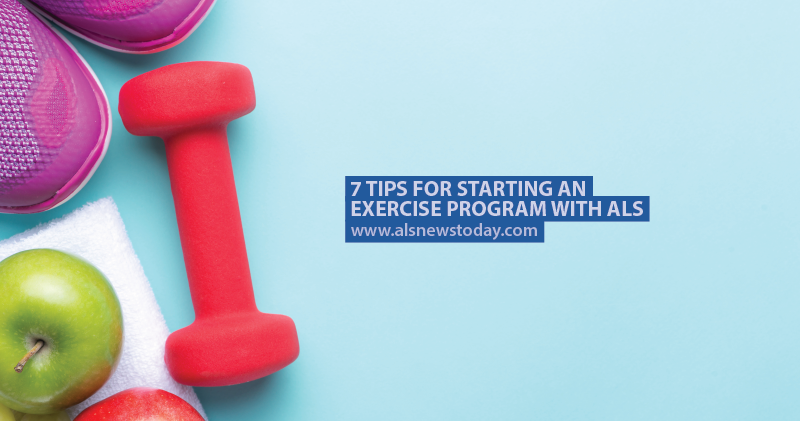7 Tips For Starting an Exercise Program With ALS

Amyotrophic lateral sclerosis (ALS) is a neurodegenerative disease characterized by the deterioration of muscles in the body, leading to loss of movement, an inability to speak and swallow, and eventually, breathe.
According to medscape.com, the rate at which muscle deterioration occurs will differ from patient to patient, but studies have found that exercise can help ALS patients retain muscle strength and improve joint function. We’ve listed some of Medscape’s practical tips to get you started on an exercise plan that can help you better manage your symptoms and improve your overall strength.
MORE: Explaining the progression of ALS
Before You Start
Before beginning any exercise regimen, it’s important that you speak to your health care team. They can tailor a program for you, including what type of exercise to do and how long you should exercise for. They can also monitor your response to exercise.
Exercise Goals
The goals are to maximize muscle function, slow down the deterioration of range of movement, and increase aerobic capacity and endurance for as long as possible.
Walking and Cycling
If you can still balance well, you can walk or use a recumbent bicycle for 20 to 30 minutes a few times each week, without overexerting yourself. This can be broken up into 10-minute segments if you prefer.
Weight Training
Weight training with light weights a few days each week (preferably not on the days you walk or cycle) will also help to build muscle strength. As the disease progresses, you’ll find that you need to use lighter weights and do fewer repetitions.
MORE: Six tips to help you manage ALS
Stretching
Stretching — both static and dynamic — once or twice a day will help ease muscle pain and slow the decline in your range of movement. You should gently stretch your muscles after exercising.
Don’t Overdo It
Listen to your body: don’t push yourself too hard; rest before you become tired; don’t exercise if you don’t feel well. If you begin to experience muscle twitching or cramping, stop exercising and speak to your health care team.
Support Equipment
If you work out in a gym, speak to the instructors about support equipment that may help you with balance issues.
ALS News Today is strictly a news and information website about the disease. It does not provide medical advice, diagnosis or treatment. This content is not intended to be a substitute for professional medical advice, diagnosis, or treatment. Always seek the advice of your physician or another qualified health provider with any questions you may have regarding a medical condition. Never disregard professional medical advice or delay in seeking it because of something you have read on this website.






